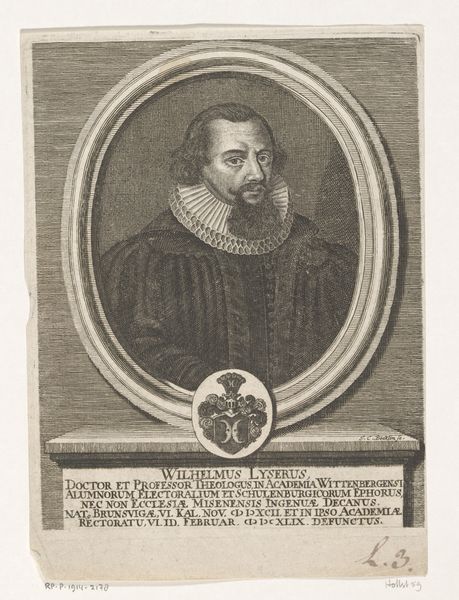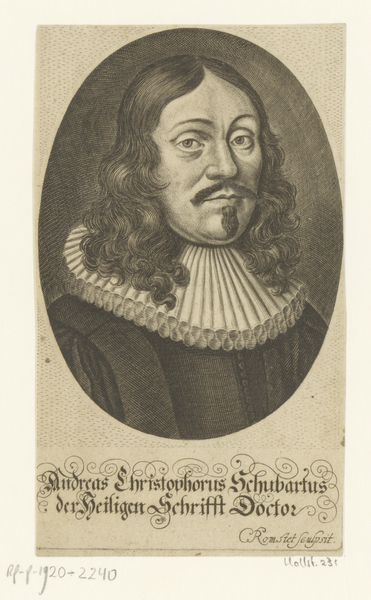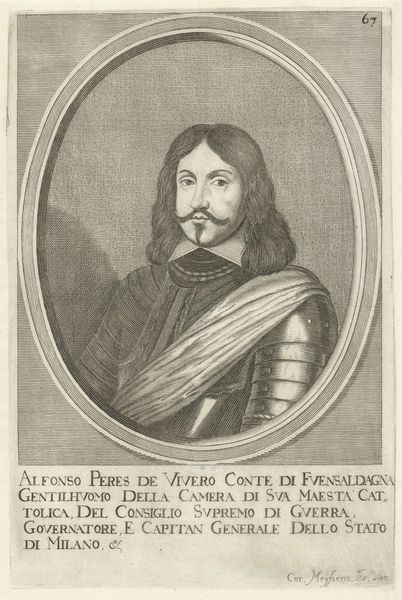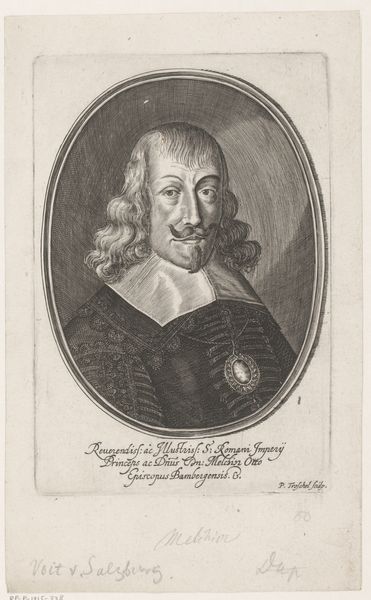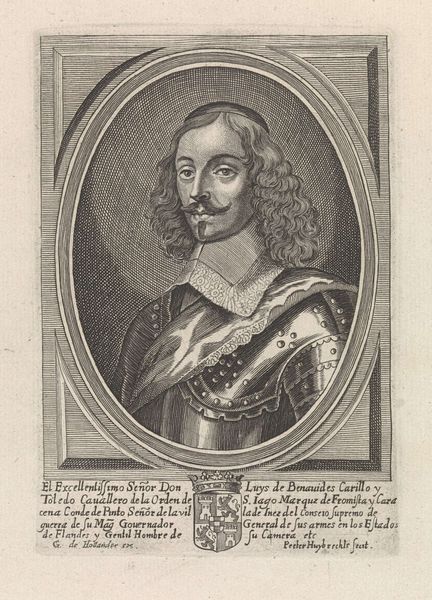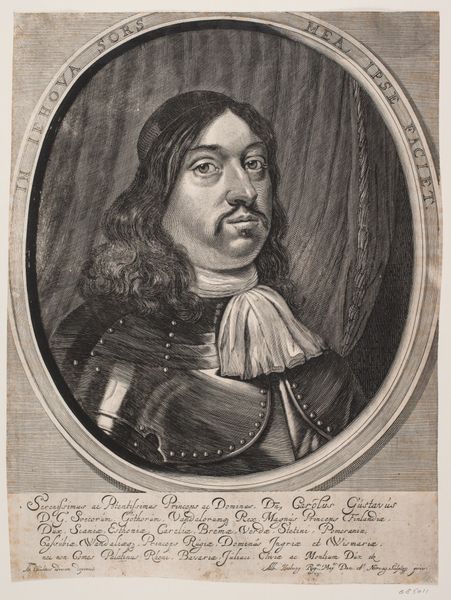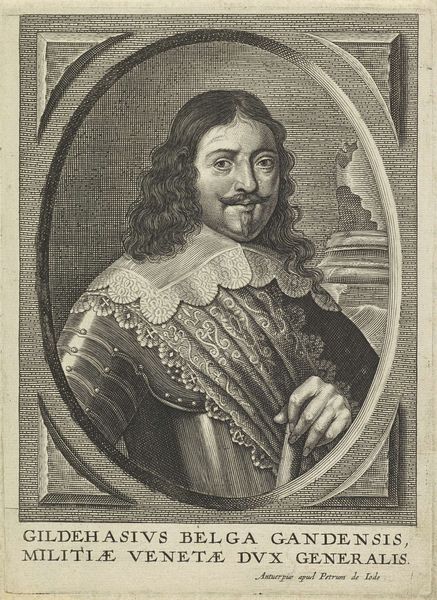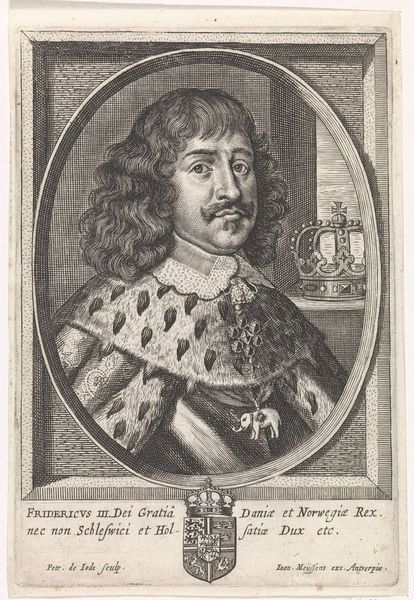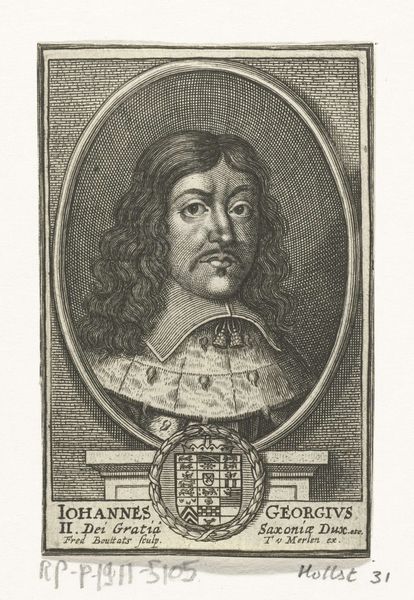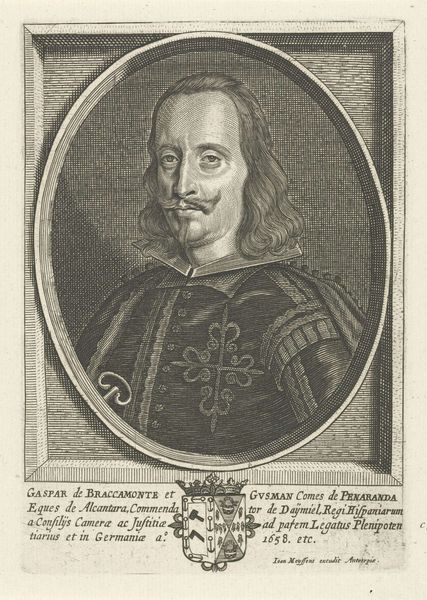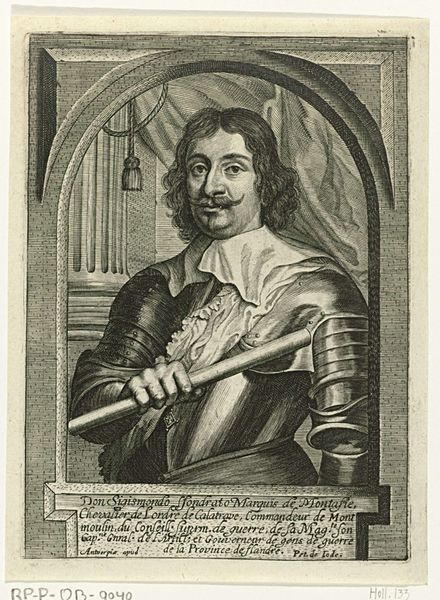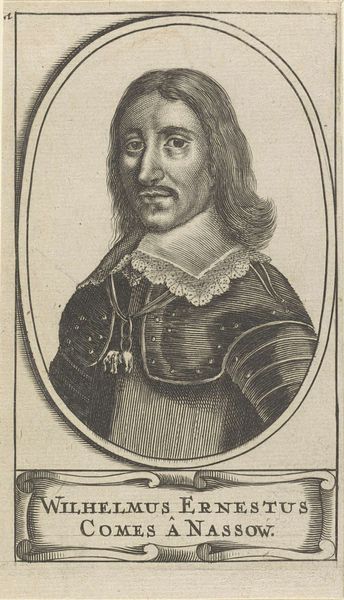
Portret van Ranuccio Farnese II, hertog van Parma en Piacenza c. 1660 - 1685
johannmartinlerch
Rijksmuseum
print, engraving
portrait
baroque
engraving
Dimensions: height 218 mm, width 147 mm
Copyright: Rijks Museum: Open Domain
Curator: Gazing up at this Baroque engraving, "Portret van Ranuccio Farnese II, hertog van Parma en Piacenza," done sometime between 1660 and 1685, I can't help but wonder about the life and times of such a titled noble, his story almost vibrates off this artwork made with simple line engravings. Editor: Well, my first impression is that the armor suggests power, yes, but also constraint, or perhaps anxiety. What burdens did Ranuccio carry? The etching has a somberness that almost feels oppressive. Curator: Absolutely. And the level of detail that artist Johann Martin Lerch achieved with simple tools is really captivating, every curl in Ranuccio's hair seems to tell us something. Think about the context: a duke caught between shifting alliances, always scheming… he ruled over others who suffered because of his position. Editor: And perpetually trying to solidify his power. This image presents him as a figure embodying Baroque absolutism, but, more cynically, it also normalizes these inherited, undemocratic power structures. It also strikes me that his heavy ornamentation and rather vacant stare serve to communicate an inherent emptiness, or lack of individuality. Curator: Precisely, this is also part of the story of European history, the artist using visual representation to tell us that there were many victims on either side of this legacy. You feel trapped simply observing. Editor: And that necktie, which might look decorative now, almost acts as a metaphor for strangulation under all those layers of obligation. He is imprisoned, just like others are. And the weight, of it all… that kind of inherited role leaves you paralyzed in place, doesn't it? A bit like gazing at your portrait for years and centuries in a row. Curator: Absolutely. It also reminds me of how art itself, even something seemingly straightforward like this portrait, can be such a battleground of interpretations, filled with so much hidden feeling. Editor: Indeed, so many contradictions folded neatly in lines of engraving. I am grateful that Johann Martin Lerch's print encourages us to question power and those trapped in its endless web, centuries after its making.
Comments
No comments
Be the first to comment and join the conversation on the ultimate creative platform.
